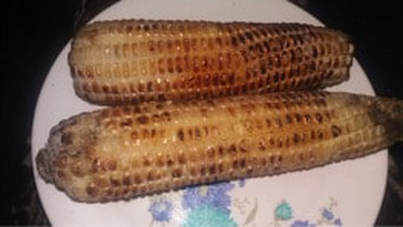Written by CorpsAfrica/Malawi Volunteer Ms. Twambilire Kalolokesya
As I have previously mentioned in my last blog, my site is an orphanage somewhere in Mchinji. This orphanage keeps children from a day old to those around twenty years. Apart from settlement land, the orphanage has farmlands where they produce different crops to minimize the cost of buying all the foodstuffs for the children and other farm products that children would not easily have access to if they had not planted. In this blog, I will give details about the crops and fruits grown by the orphanage.
Firstly, the orphanage grows maize for the children to eat nsima (a Malawian food made from maize flour). The maize crops are grown twice a year both during the rainy season and the dry season. During the dry period treadle pumps are used to irrigate the maize crops. Apart from maize flour for nsima the children also eat fresh maize which is cooked for them or roasted.
Secondly, the orphanage grows crops that they can serve as relish with the nsima for the kids. These crops include beans and different types of vegetables, for example leafy greens. These crops are also grown twice every year, both rain fed and irrigated. For the beans they get their seedlings from the previous year’s produce.
The orphanage also grows fruits and crops that usually schools do not have the luxury of buying. This is so the kids have access to different kinds of fruits and foods at minimum cost. At one of the farms they have bananas and sugarcanes because the area holds water for a long period and there is a source of water all year round. They also have fruits like guavas, oranges, tangerines and recently grown macadamia nuts for the kids to enjoy.
Another type of farming done by the orphanage is aquaculture. This is also done to feed the children at the orphanage so that they get some animal protein. Close to the campus they have eight fish ponds most of them 200 square meters. Last month we harvested 55 kilograms of fish from seven of these ponds. We also got fingerlings that have been restocked in the eight ponds and an additional five dams at another farm owned by the orphanage.
These are some of the things the orphanage grows in order to ensure good nutrition for the children.

